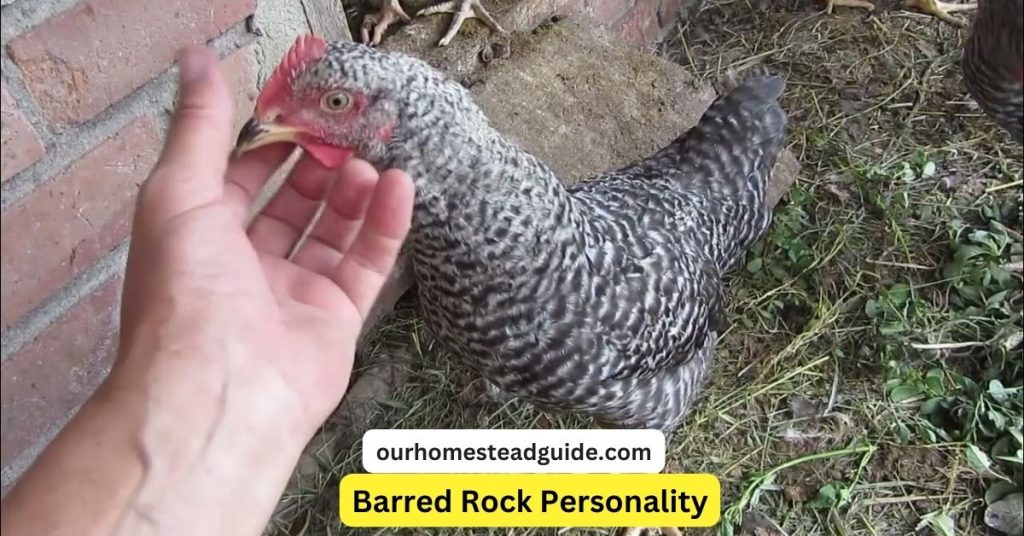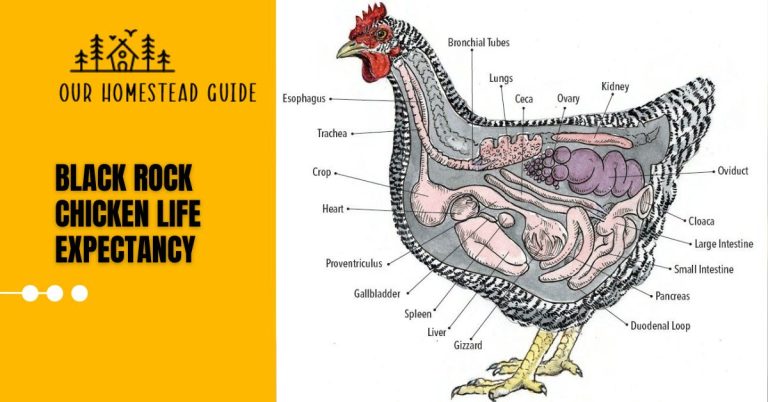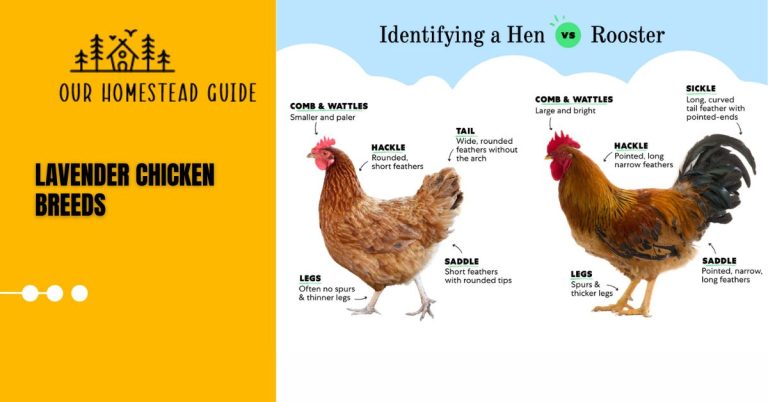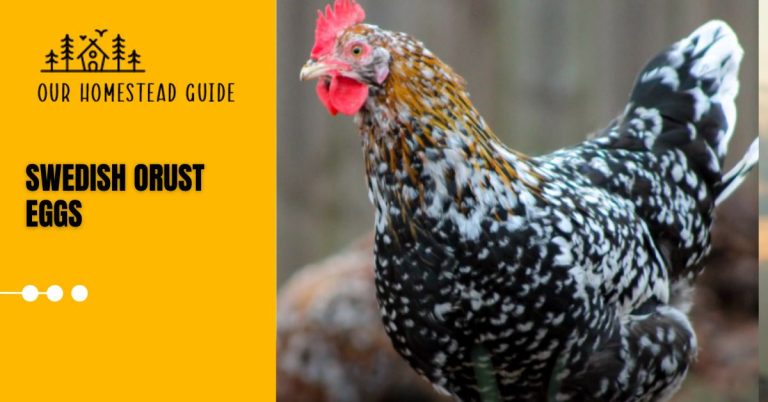Barred Rock Egg Color: Height, Size and Raising Tips
Barred Rock Egg Color Beautiful light to medium brown eggs, with hues ranging from warm caramel to dusty rose, are laid by Barred Rock hens. These prolific layers will provide four to five eggs each week, which are ideal for enhancing the sophistication of your breakfast basket.

Here is a simple table that provides an overview of the information:
| Step | Description |
|---|---|
| 1 | Identify the Chicken Breed: Plymouth Rock |
| 2 | Characteristics: Hardy, docile temperament, good egg production |
| 3 | Egg Color: Typically brown, with some variation in shade |
| 4 | Desirability: Brown eggs are considered natural and wholesome |
| 5 | Overall Assessment: Plymouth Rock is a productive and reliable egg-laying breed |
Barred Plymouth Rock Chicken Height:

Grown Roosters: about 3.4 to 4.3 kg (7.5 to 9.5 pounds).
Grown Hens: about 2.7 to 3.4 kg (6 to 7.5 pounds).
Remember that these weights are averages and that actual chicken weights may differ. Furthermore, weight is more frequently employed to determine a chicken’s size than height. Please add more information if you have a specific context in mind or are searching for more in-depth information so that I can respond with more pertinent and accurate information.
Barred Rock Size and Raising Tips

Size:
A medium- to large-sized chicken breed is the Barred Rock. While roosters can weigh anywhere from 7.5 to 9.5 pounds, adult hens usually weigh between 6.5 and 7.5 pounds.
Appearance:
Their characteristic barred black and white plumage pattern, enhanced by a red comb and wattles, makes them immediately identifiable.
Temperament:
Barred Rocks are a great addition to backyard flocks because of their calm and amiable nature. In general, they get along nicely with kids and are environment-adaptive.
Egg Production: Barred Rock Egg Color

Brown eggs are consistently laid by Barred Rocks. Hens may lay between 200 and 280 eggs annually on average, depending on their nutrition and living circumstances.
Housing:
Assemble a safe haven with enough airflow. Even while barred rocks may withstand harsh weather, protection from such elements is crucial. Each chicken should have three to four square feet of area within the coop.
consuming food
Provide layers with a well-balanced poultry feed. Add some fresh produce, grains, and fruits to their diet. Make sure there is always availability to clean water.
Regarding Health:
Keep an eye out for common health problems in chickens, such as respiratory illnesses, lice, and mites. For their health, routine veterinarian examinations and immunizations are necessary.
Space and Roaming:
Outdoor areas where Barred Rocks may wander and scratch are beneficial. They need to be kept safe from predators in a fenced-in area.
Social Context:
Barred Rocks are gregarious birds, so it’s best to keep them in groups of two or more to avoid loneliness.
Nesting Cases:
For laying eggs, provide cozy nesting boxes with straw or shavings inside. If you intend to let Barred Rocks hatch and nurture their offspring, they often make excellent moms.
Are Barred Rock Chickens the Same As Plymouth Rock Chickens?
Kind of. These stunning birds are a variation of Plymouth Rock hens in color. The most prevalent hue is really the barred black and white feathers. One of the characteristics that makes the breed so identifiable is these distinctive feathers.
Other colors of Plymouth Rock chickens are partridge, buff, blue, and white. These birds and Plymouth Rocks have the same characteristics and maintenance needs. Therefore, think about taking care of a Plymouth Rock rather than a Barred Rock if you can’t find one.
Barred Rock History
The Barred Rock boasts a fascinating history, intricately woven into the story of American poultry culture. Here’s a glimpse into their past:
Early Beginnings (1840s-1860s):
Mysterious Origins: It’s still unclear exactly who the Barred Rock is descended from. Though the exact mix is up for contention, theories point to breeds like Dominques, Javas, and Cochins as potential contributors.
New England Debut: In the 1840s, Massachusetts saw the appearance of the first barred birds that resembled the contemporary Barred Rock. But at first, they disappeared from view.
Second Act and Refinement: By mating roosters to Java hens in 1869, Massachusetts farmer Mr. Upham brought back the barred pattern. This established the framework for Barred Rock as it exists today.
Rise to Fame (1870s-1930s):
Dual-Purpose Darling: American homesteaders were drawn to the Barred Rock due to its high egg production and high-quality meat.
Showtime Spotlight: The Barred Rock cemented its position among established breeds when it was officially recognized in the American Standard of Perfection by 1874.
America’s Favorite: The Barred Rock was the most popular chicken breed in the US in the late 19th and early 20th centuries. Their endearing disposition and versatility added to their allure.
Modern Times (1940s-Present):
Trend Shifting: Heritage breed supporters and backyard aficionados continued to choose Barred Rocks, even as commercial chicken production moved toward specialized breeds.
Versatility endures: The Barred Rock’s charming personality, superior egg production, and ability to withstand a variety of conditions have contributed to its ongoing appeal today.
Conservation and Legacy:
There is no denying the Barred Rock’s significance in American poultry history. Their impact still charms backyard flock owners and inspires breeders. With the help of groups like the Livestock Conservancy, this adaptable breed will be preserved for future years, enriching the fowl environment with their unique feathers and amiable disposition.
Barred Rock Appearance
Barred Rock appearance for chicks and adults:
| Aspect | Chicks Appearance | Adult Appearance |
|---|---|---|
| Plumage | Fluffy and soft, with a mix of black and white stripes | Distinctive barred black and white plumage pattern |
| Comb and Wattles | Small and pale, less developed | Red comb and wattles, more prominent and developed |
| Leg Color | Yellow | Yellow, transitioning to a more mature shade as they grow |
| Feather Pattern | Fuzzy with a more muted, less defined barred pattern | Well-defined, clear, and sharp black and white barred pattern |
| Size | Smaller and lighter | Medium to large, with hens weighing around 6.5 to 7.5 pounds, and roosters 7.5 to 9.5 pounds |
Barred Rock Personality

Docile Temperament:
Barred Rocks are often thought to have a tranquil and kind personality. Given their reputation as one of the most gentle breeds, they are a good choice for beginning chicken farmers and families.
Adaptability:
These hens can adjust to a variety of settings and lifestyles. Barred Rocks are a flexible addition to a variety of backyard arrangements since they tend to adapt well in both urban and rural environments.
Social Nature:
Barred Rocks are gregarious birds that do well in flocks with other hens. They prefer to get along well with various breeds and love being in flocks. Having company lessens their chances of loneliness and improves their general well-being.
Good with Children:
Barred Rocks are a fantastic option for families with kids because of their calm temperament. They are acceptable for interacting with children under appropriate supervision since they are less prone to display aggressive behavior.
Curiosity & Foraging Instinct:
Barred Rocks possess a keen sense of curiosity and an intense foraging instinct by nature. They are efficient foragers in a backyard setting since they like scraping the ground to find insects and plants.
Alertness:
Barred Rocks are normally peaceful, yet they are also aware of their environment and attentive. They could act protectively, particularly toward their breeding grounds.
Sadness:
It is well known that Barred Rock chickens are less likely to exhibit broodiness, or the need to sit on and hatch eggs. Even while this may be advantageous for steady egg production, you should think about whether hatching chicks is a part of your poultry strategy.
Here are some chicken breeds they can be kept with:
- Silkie
- Speckled Sussex
- Buff Orpington
- Australorp
- Cochin
Barred Rock Care
Accommodations: Give them access to a safe, well-ventilated coop to keep them safe from predators and inclement weather.
Make sure the coop has enough room; give each bird around 3–4 square feet.
Feeding: Provide a layer-appropriate, well-balanced chicken feed that is high in the nutrients needed to produce eggs.
Add grit for digestion and fresh fruits and vegetables to their meals.
Water: Always make sure you have access to fresh, clean water. Egg production and general health depend on adequate hydration.
Monitoring Health: Check hens for injuries, parasites, and illnesses regularly.
To keep them healthy, get frequent veterinarian examinations and shots.
Dust Bathing: Permit entry to regions where dust bathing is practiced. Dust bathing reduces external parasites and helps hens maintain clean feathers.
Area and Mobility: Give Barred Rocks a safe space to go about and hunt. To keep predators away from them, make sure the area is gated.
Social Context: To avoid loneliness, keep Barred Rocks in groups of two or more. Being gregarious birds, they enjoy the company of other people.
Nesting Cases: For laying eggs, provide cozy nesting boxes with straw or shavings inside. If given the chance to lay eggs and rear them, barred rocks often make excellent moms.
Considering Temperature: Although they offer refuge from excessive heat and cold, barred rocks are cold-hardy. In warmer weather, make sure the coop has enough airflow.
Managing and Communicating: Engage in social interactions with your Barred Rocks from an early age to promote ease in interpersonal relationships. Treat them with kindness to foster trust.
Gathering Eggs: To keep them clean and avoid broodiness, gather eggs regularly.
Cutting Claws and Beaks: Track the development of your beak and claws and trim as necessary. Although it is not generally necessary, this aids in preventing overgrowth.
Handling Broodiness: If you do not want to hatch chicks and broodiness becomes a problem, think about ways to prevent it, such as throwing out eggs right away.
Breeding Barred Rock Chickens
Carefully choosing breeding stock based on desired characteristics including robust barred patterns, excellent conformation, and steady egg production is necessary when producing Barred Rock chickens.
It’s critical to maintain ideal flock health, comprehend the sex-linked barring gene, and establish precise breeding objectives. Natural breeding is supported by pleasant nesting areas and a suitable rooster-to-hen ratio.
Maintaining track of breeding pairings, hatch data, and qualities seen in the progeny aids in evaluating and improving the breeding program. Whether using incubation or natural brooding, it’s important to keep an eye on the health of the chicks and remove those that don’t live up to expectations.
A productive Barred Rock chicken breeding program is facilitated by a dedication to genetic variety, community involvement, and generational development.
PROS AND CONS OF BARRED ROCK CHICKENS
One of the most common breeds for backyard hens, and a personal favorite of mine, are barred rock hens. I’ll let you make your own decision, but I firmly believe that the advantages exceed the disadvantages.
Pros of Barred Rock Chickens:
- High Egg Production
- Cold-Hardy
- Friendly Temperament
- Adaptability
- Foraging Instinct
- Distinctive Appearance
- Broodiness Management
Cons of Barred Rock Chickens:
- Molting Period
- Size for Limited Spaces
- Feathering Wear
- Potential Broodiness
- Initial Shyness
- Feeding Costs
Barred Rock Chickens Common Health Issue
Respiratory Infections:
Due to inadequate ventilation or exposure to drafts, Barred Rock hens may be susceptible to respiratory illnesses. Coughing, sneezing, nasal discharge, and difficulty breathing are among the symptoms.
Outside Parasites, such as Lice and Mites:
Barred Rocks can become infected with external parasites like mites and lice, which can lead to pain, feather loss, and even health problems. It is crucial to manage parasites and conduct routine inspections.
Coccidiosis
In particular, Barred Rock chicks are vulnerable to coccidiosis, a digestive illness brought on by the coccidia parasite. Diarrhea, fatigue, and weight loss are symptoms.
Egg-Laying Issues:
Hard-shelled eggs or egg binding are two issues that barred rock chickens may have with producing eggs. Maintaining a diet high in calcium is essential to avoiding issues with egg production.
Stress from Heat:
Barred Rocks can withstand intense heat, even though they are cold-hardy. To avoid heat-related health problems during hot weather, it is essential to provide shade, enough ventilation, and access to cool water.
Most Frequently Asked Questions!
Q: What is the average lifespan of Barred Rock chickens?
Barred Rock hens may live anywhere from 6 to 8 years on average, while individual lifespans might differ depending on several variables including genetics, nutrition, and general care.
Q: At what age do Barred Rock chickens start laying eggs?
Although this might vary, barred rock chickens often start producing eggs at the age of five to six months. The time of egg production is influenced by several factors, including genetics, food, and exposure to sunshine.
Q: How many eggs can I expect from a Barred Rock hen?
Egg output from Barred Rock chickens is consistently high. A healthy Barred Rock hen may lay 200 to 280 brown eggs annually on average, however there may be individual differences.
Q: Do Barred Rock chickens require special care in winter?
Despite being cold-hardy, Barred Rocks require extra insulation in the coop and access to unfrozen water throughout the winter. To avoid moisture buildup, proper ventilation is essential.
Q: Are Barred Rock chickens good for free-ranging?
Yes, barred rocks may flourish in free-range settings and have a strong foraging drive. They may, however, eventually exhibit some wear on their feathers and care should be taken to protect them from predators.
Q: Do Barred Rock chickens get along well with other breeds?
Yes, Barred Rocks get along well with a variety of chicken breeds due to their typically calm and amiable disposition. Harmony in a mixed flock may be preserved with appropriate introductions and sufficient space.
Q: Are Barred Rock roosters aggressive?
Barred Rock roosters are renowned for having a more laid-back and amiable disposition than certain other breeds. Individual temperaments might differ, though, so socialization and appropriate treatment are crucial.
Q: How can I prevent and manage broodiness in Barred Rock hens?
Although broodiness is less common with Barred Rock hens, if it does happen and you do not want the eggs to hatch, you may assist in preventing it by making the setting pleasant and distraction-free, gathering the eggs quickly, and reducing the amount of materials needed for the nest.
Q: What should I feed Barred Rock chickens?
For Barred Rock hens, a well-balanced layer feed that includes vital nutrients is appropriate. Add fresh produce, grains, and fruits to their food as supplements. Sufficient calcium is essential for robust eggshells.
Q: How do I prevent and manage common health issues in Barred Rock chickens?
Common health disorders may be prevented and managed with regular check-ups, a clean living environment, a healthy diet, and quick treatment of any symptoms of the disease. See a veterinarian about any particular issues.
What is Barred Rock Egg Color?
Barred Rock chickens, often referred to as Plymouth Rock hens, are a well-liked breed distinguished by their outstanding egg output and amiable disposition. Brown eggs are produced by Barred Rock chickens. Although there are significant variations in color, brown is typically medium to dark in tone.
Eggs deposited by different Barred Rock chickens may vary somewhat in color due to a variety of variables, including the hen herself, her nutrition, and her living environment. They are a popular option for backyard egg production since they generally have a reputation for reliably producing big brown eggs.
you may also like this article.
Barred Rock Chicken: Nurture, Appearance, And Egg Production,






